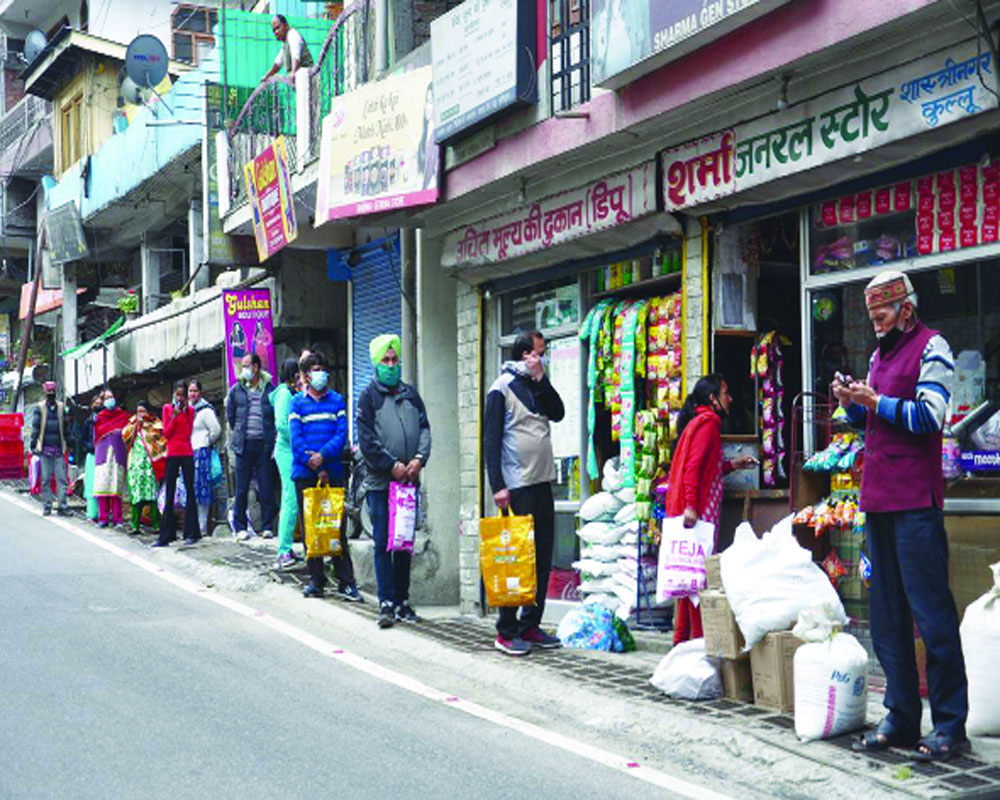Curbs have been eased but with existing chains broken, a stimulus and a new work code won’t perk up the economy
Certain truths are too glaring to ignore. Like the fact that most metro cities are on a virus spiral and are fully red, which means they need to be contained if we do not want an apocalyptic slide into chaos. Unlike most world cities, Indian ones have a high population density. Toying with herd immunity, like the way Sweden has done, moving a younger population outside while keeping the vulnerable indoors, is too huge a risk to take and monitor. But lockdown 3 also means that the economic activity, which has been enabled with easing of restrictions, won’t quite pick up pace because the disease hotspots also happen to be the country’s economic hubs. And while the rural economy has got a push in disease-free zones, MGNREGA work has seen record enrollment and returnee migrants are signing up for village schemes and infrastructure, the urban economy is still some time away from whirring back to life. Now the ease of doing business is still too sporadic to have any accelerating impact on the economy. Cities can only avail essential goods and services, so the big push that consumption was supposed to get isn’t happening because suppliers have a limited range to operate within, non-essential goods strictly off the list for the time being. Non-essential single shops are allowed to be open only in safe zones, that too with truncated hours. Certainly not in red clusters. And although the Government has allowed 33 per cent staff of industrial units and firms to be operational even in red zones, the protocol is yet to be figured out in different States, so implementation and synergising a work flow within new rules and codes are not only time-consuming but slow down movement. This logistical mismatch is one of the reasons why even those who can run businesses are feeling hemmed in. Of course, the reverse migration has meant a chronic shortage of labourers and they are not likely to return in the near future. In fact, businesses will now have to offer other incentives and living quarters to hold back labourers. Then there are issues like sourcing of raw material, movement of products, supply chain disruptions due to the forced closure of factories of suppliers and ancillaries, all of which are just about lurching forward in fits and starts. Even while a third economic stimulus is in the works, with Prime Minister Narendra Modi personally looking to put the economy back on keel, industry and investors are not finding enough confidence yet. Experts are worried that the foreign capital outflow taking place from India is bigger than from any other emerging economy, $15 billion leaking in March alone. With the private sector choked, global players are leveraging other economies. The rupee is weaker than ever before and we must seem convincing enough as a future market.
Meanwhile, the Government has a tough task opening up the economy without risking a health disaster. Any meaningful stimulus would need a minimum Rs 6 lakh crore as we stare at a prolonged trough till the disease curve flattens out. While dry rations may not be a problem, even usual consumer goods are now in short supply. While we have been able to rush essentials for a while given existing stocks, the cessation of production, the lack of packaging and processing and breakage in the logistics chain mean that consumer goods are going to be available in limited numbers. Nearly 43 per cent of the 157 units owned by FMCG majors are in the Coronavirus red zones in Maharashtra, Tamil Nadu, Himachal Pradesh, Uttarakhand and West Bengal. Besides, with asymptomatic carriers going around, distancing, hygiene and other protocols at our factories need to be executed with military precision and precaution. So if green zones are opened and anything between 25-83 per cent people are asymptomatic carriers, infections will spike. Monitoring markets and mandis poses a huge challenge, so a rotational format of days when these will be open along with staggered times must be worked out before hand. Most importantly, every local administrative authority down to the panchayat level will have to be empowered to run territories with efficiencies. The first lockdown gave us some time to prepare healthcare facilities for an expected surge. This lockdown should be about creating an enabling atmosphere and inculcating discipline and compliance among people. For without adherence to exit protocols, there would be no economy left at all. The problem is not of choice but the will to get going.
(Courtesy: The Pioneer)








 OpinionExpress.In
OpinionExpress.In















Comments (0)